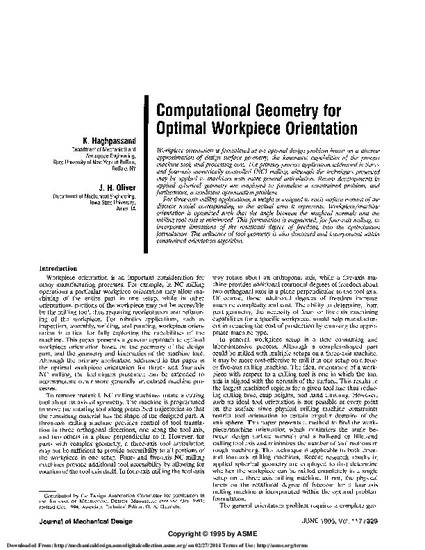
Workpiece orientation is formulated as an optimal design problem based on a discrete approximation of design surface geometry, the kinematic capabilities of the process machine tool, and processing cost. The primary process application addressed is three-and four-axis numerically controlled (NC) milling, although the techniques presented may be applied to machines with more general articulation. Recent developments in applied spherical geometry are employed to formulate a constrained problem, and furthermore, a nonlinear optimization problem. For three-axis milling applications, a weight is assigned to each surface normal of the discrete model corresponding to the actual area it represents. Workpiece/machine orientation is optimized such that the angle between the weighted normals and the milling tool axis is minimized. This formulation is augmented, for four-axis milling, to incorporate limitations of the rotational degree of freedom, into the optimization formulation. The influence of tool geometry is also discussed and incorporated within constrained orientation algorithm.
Available at: http://works.bepress.com/james_oliver/2/

This article is from Journal of Mechanical Design 117 (1995): 329–335, doi:10.1115/1.2826143. Posted with permission.